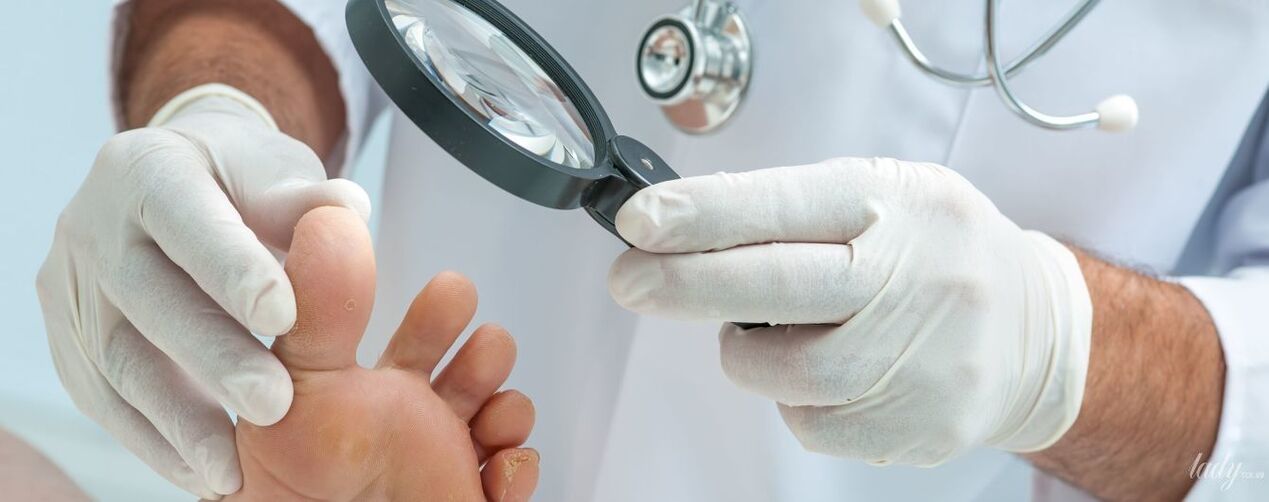The fungal infections of the nail plate are about half of all diseases of the nails and are quite common in modern society.

In most cases, onychomycosis affects the nail plates on the legs, so the disease is not noticed immediately, but at the stage of pronounced symptoms.This is an infectious disease that can manifest itself not only with a cosmetic defect, but also by a violation from the immune system, and even the digestive tract.The nail fungus cannot be underestimated, its treatment should be timely under the control of an experienced doctor.
Causes of fungal infection
The cause of the infection of the nail plate is usually three types of mushrooms: dermatophytes, yeast -like mushrooms and molds.Most often in moderate climate, onychomycosis is caused by the fungal microorganisms of Trichophyton Rubrum (trichophyte red) - is 70% of cases of fungus and Trichophyton Mentagrophytes (trichophyton of the inter -down) - 20% of the diagnosis.
You can become infected with onychomycosis in such common places as a pool, a sauna, a bathhouse, when wearing other people's socks and even at a pedicure session.
In addition, some people are predisposed to this disease due to various diseases.Among such pathologies, immunosuppressive states are distinguished associated with HIV infection or chronic treatment with immunosuppressants after organs transplantation, or with some autoimmune diseases.
Despite the fact that untreated onychomycosis is an infectious disease, most patients do not recognize their changes in the nail pathological, therefore, they usually turn for medical help in advanced cases.And, by the way, ignoring the disease can lead to loss of nail and spread infection to neighboring skin.
How the disease manifests itself
Most often, the infection develops on the first and/or fifth finger of the foot (if the changes affect all the nails, this is usually a symptom of another disease, for example, psoriasis).At first, the changes affect the edge of the nail, it change the natural color to yellowish-brown.After the nail plate, it becomes fragile and brittle, over time it changes its shape and thickens.
The most characteristic symptoms of the fungal infection of the nails include:
- change in the color of the nail to yellow, brown, white or black;
- thickening of the nail plate and the development of its increased fragility;
- deformation of the plate and its separation from the nail bed;
- an unpleasant odor emanating from an infected nail;
- The formation of an inflammatory process around the nail.
At the late stage of the disease, pronounced pain in the nail can develop and even difficulty in walking.
Prevention and treatment of nail fungus
Onychomycosis should be treated as soon as possible, because the infection tends to extend to other nails.In addition, the disease in the late stage leads to the destruction of the entire nail plate, which will later have to be removed.
Before prescribing treatment, the doctor will certainly prescribe a laboratory analysis, which will determine the type of fungus, the degree of damage and choose the most effective treatment.The analysis includes the capture of the material from the affected nail plate and its research under the microscope.
How does the treatment of onychomycosis go?The method and duration of infection therapy depends on many factors, including the severity of the nail lesions, the type of pathogen and related pathologies.
Treatment of fungal nail infection usually begins with the use of local drugs in the form of varnishes, lotions or creams that cope well with the disease in the early stages.If the changes affect more than one plate, occur for a long time, local drugs are supplemented by antifungal agents for oral administration.The doctor may prescribe drugs based on itraconazole or fluconazole.
In the case when onychomycosis is persistent, it is not subjected to drug treatment or constantly recurrent, the doctor recommends removing the infected nail plate, thereby eliminating the source of the infection.
Please note that onychomycosis is an infectious disease prone to frequent relapses, so you should adhere to important preventive rules:
- Do not walk barefoot in the pool, gyms;
- perform pedicures in salons with high -quality equipment disinfection;
- monitor the cleanliness of shoes;
- wash your feet regularly;
- respond to early symptoms, for example, a change in the color of the nail plate.
Attention!The source of re -infection of the fungal infection is shoes, so it is recommended to throw it or disinfect it with special means that the doctor will talk about.

























